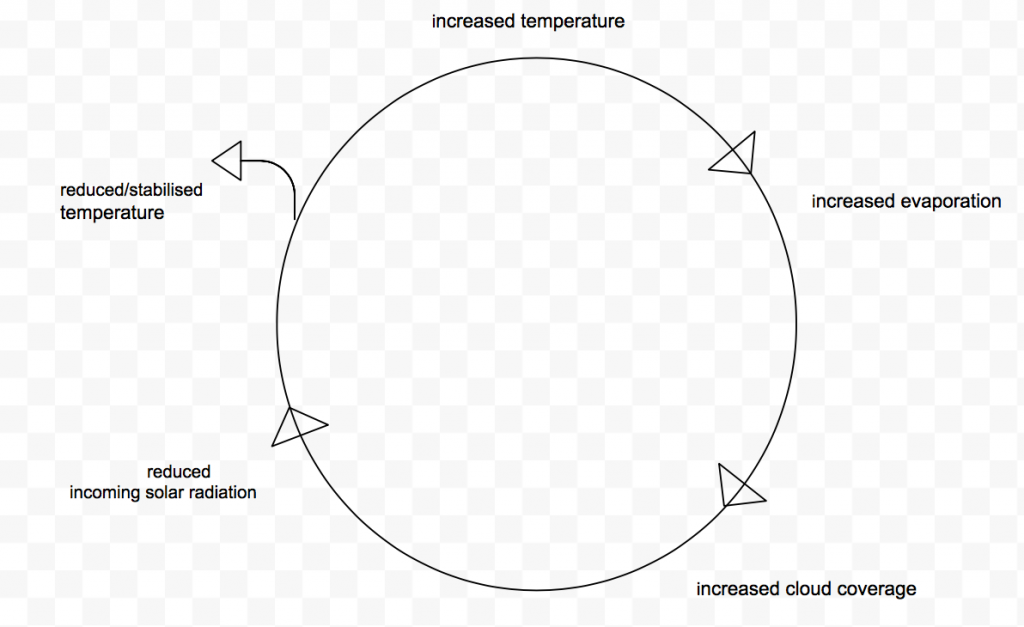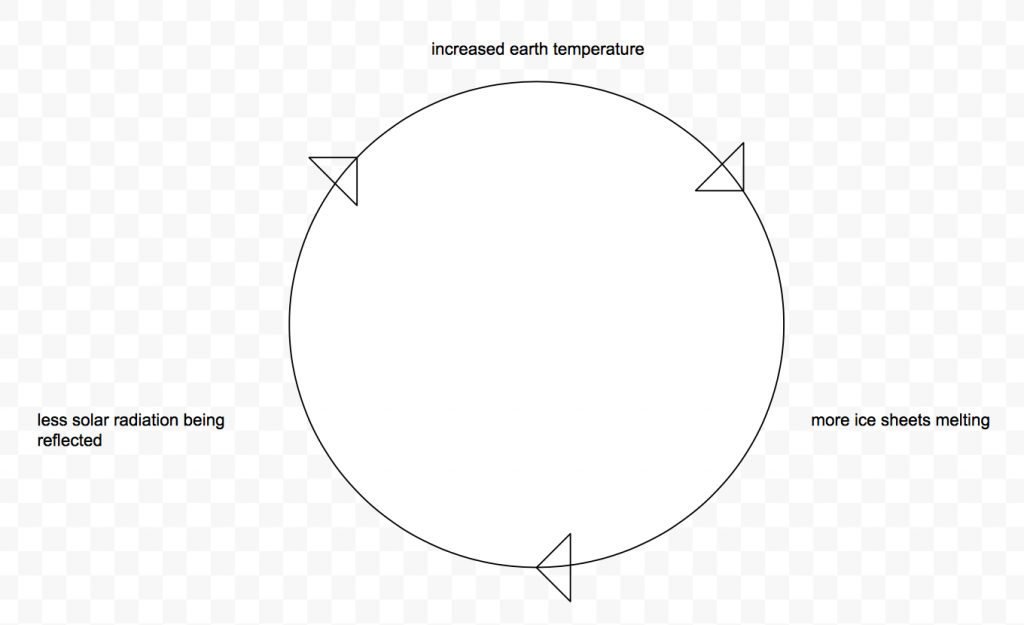What are feedback loops?
Feedback loops occur when the consequence of a change in the environment will feed back to the source of the change, magnifying or reducing its effect. Two kinds of feedback mechanisms exist: there are negative feedback loops and positive feedback loops.
1) Positive feedback loops refer to when an initial change in an ecosystem will cause further changes that in turn increase the impact of the initial problem.
2) Negative feedback loops refer to when a change in an ecosystem will be cancelled out by its same consequence.
In both cases, the end result will circle back to the source of change, but negative feedback reduces (or completely reverses) it, and positive feedback aggravates it. Feedback loops occur naturally in the environment, these are some typical examples of feedback loops:
Negative feedback loop

This diagram shows how the increase in temperature of the earth and seas will increase evaporation from the ocean and therefore the amount of cloud cover. This reduces incoming solar radiation and prevents further temperature increase. The result (increased cloud cover) attenuates the initial change (rise in temperature), which makes this a negative feedback loop.
Positive feedback loop

This diagram illustrates how the rise of both the earth’s surface temperature and the sea temperature causes increased evaporation which results in the shrinking of ice sheets. This leads to less solar radiation from the sun being reflected by the white ice sheets, and more radiation absorbed by the Earth. Consequently, the Earth’s surface temperature rises even more, which makes this a positive feedback loop.
What do they mean?
Feedback loops form the dynamics that regulate the state of ecosystems. Species are adapted to their specific habitats, they interact with each other in various different ways and many of them rely on each other for their own survival. Therefore, stability (also known as “equilibrium”) is important because it promotes the steady state of ecosystems, where all organisms are in balance with their environment and with each other.
Sudden changes in the environment can affect the ressources and niches of many species, and can even lead to a chain of events that would negatively affect many other organisms.
Therefore, and rather ironically, negative feedback loops are considered to have a positive impact on the environment, because they promote stability by reversing change. However, positive feedback causes deviation from stability, which can negatively affect ecosystems by causing alterations in the habitats of animals and plants.
Why are they important?
Human activity is having an increasingly large impact on ecosystems in inducing these feedback loops and destabilising equilibriums on a worldwide scale. Positive feedback loops are particularly dangerous because if they go on for long enough, they can cause ecosystems to reach a “tipping point”. As its name suggests, it refers to the point at which an ecosystem can no longer cope with environmental change and will shift or “tip” from one state to another. This means that the environmental norms of the ecosystem would be altered (temperature, weather patterns, available resources, and more). One major issue with tipping points is that they are irreversible.
In addition, the rise in the earth’s temperature is particularly worrying because we are unable to accurately predict the tipping point at which the planet wouldn’t be able to sustain anymore warming, and would become uninhabitable for us. The changes that would occur could have catastrophic consequences on all humankind, as our way of life in the present state of the earth wouldn’t be compatible with it once the tipping point had been reached. We aren’t able to predict exactly what the consequences would be, or the extent of these changes, but some think it could potentially cause the end of our entire species.
Conclusion
Feedback loops are powerful cycles that we must take into account when considering the course of climate change. Essentially, feedback loops explain the scientific process behind climate change. These loops justify the need for action to protect the Earth, for the sake of humanity as well as all other organisms living on the Earth.
Written in January 2023 © Your Green Footprint
